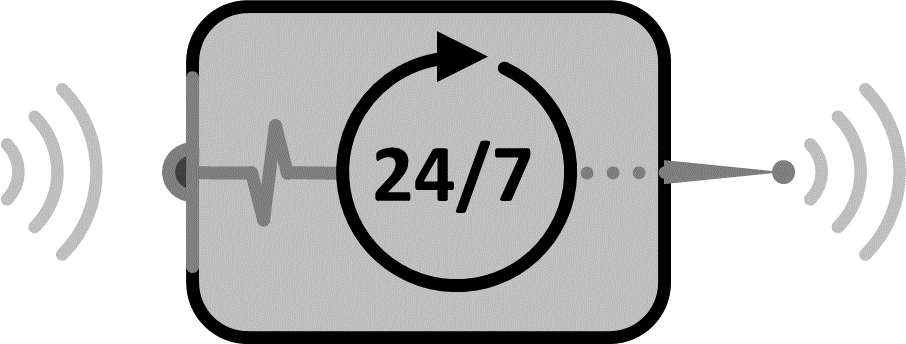Always-On Device
![]()
Some devices have to be available and responsive at all times. If the energy supply allows it, leave the device running and connected at all times.
Context:
You have a Mains-Powered Device or a device that has plenty of energy available, even though it is a Period Energy-Limited Device, Lifetime Energy-Limited Device, or Energy-Harvesting Device.
Problem:
You have a device with an inexhaustible energy supply and need to have it available and responsive at all times.
Forces:
-
Energy Savings: Saving energy is not the top priority in your situation.
-
Reachability: The device has to be online and reachable all the time.
-
Reactivity: The device has to react to commands instantly.
-
Functionality: All of the device’s functionality has to be available all the time.
Solution:
Let the device be always on so that it is permanently connected to the network and in a state where it can receive and execute commands as soon as they arrive.

Solution Details:
Benefits:
Variants:
Related Patterns:
Known Uses:
- L. Reinfurt, U. Breitenbücher, M. Falkenthal, F. Leymann, and A. Riegg, “Internet of Things Patterns for Devices: Powering, Operating, and Sensing,” International Journal on Advances in Internet Technology, vol. 10, no. 3 & 4, pp. 106–123, 2017. Available at http://www.iariajournals.org/internet_technology/inttech_v10_n34_2017_paged.pdf